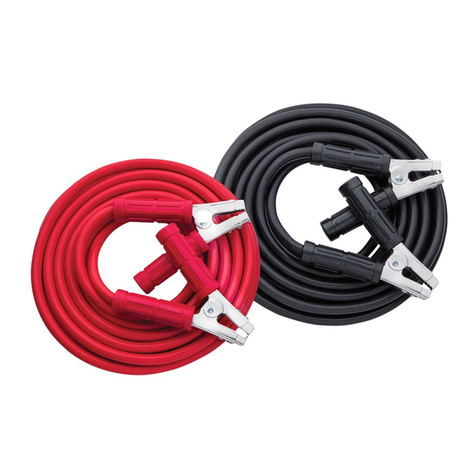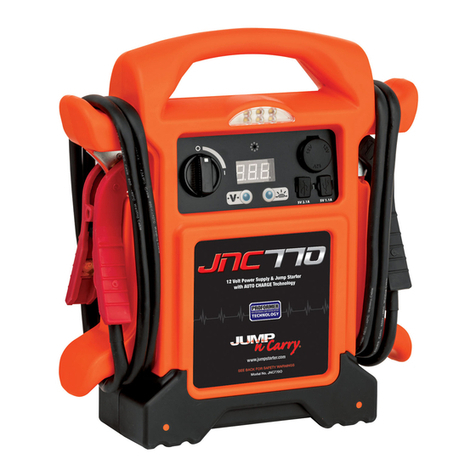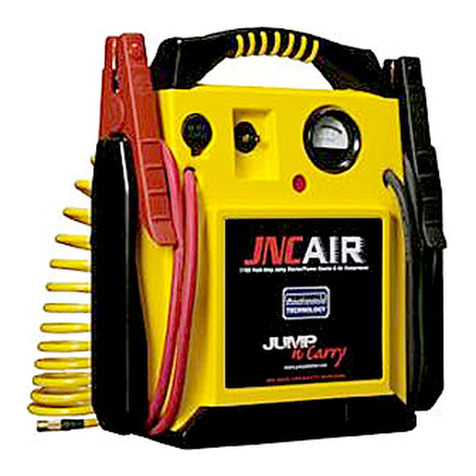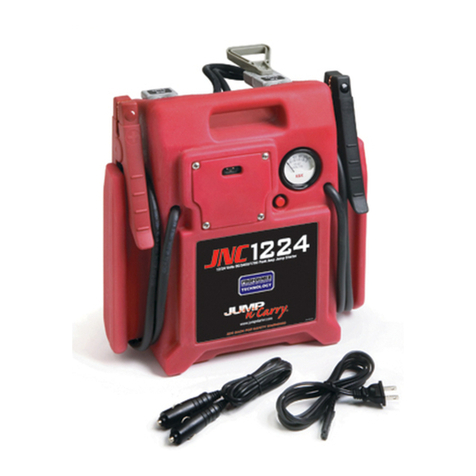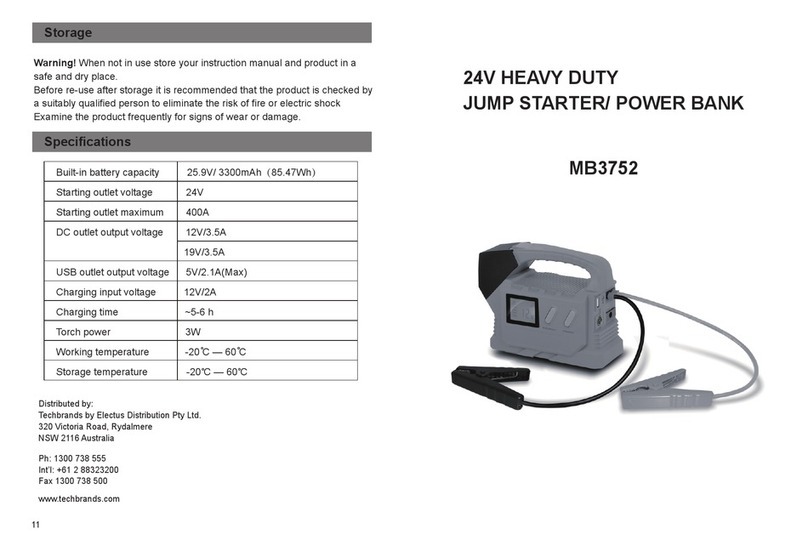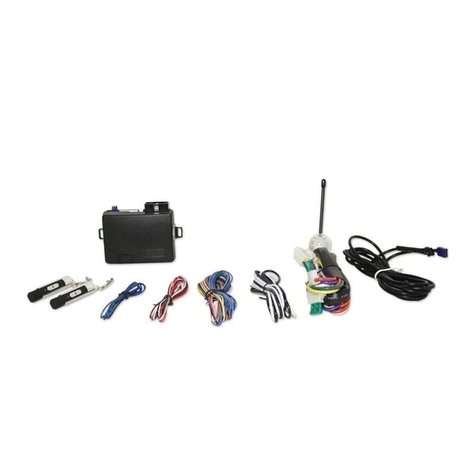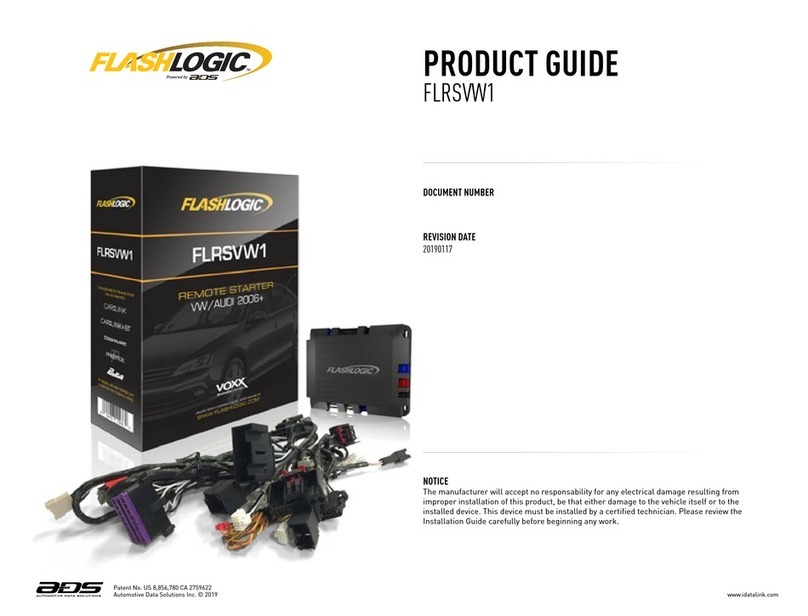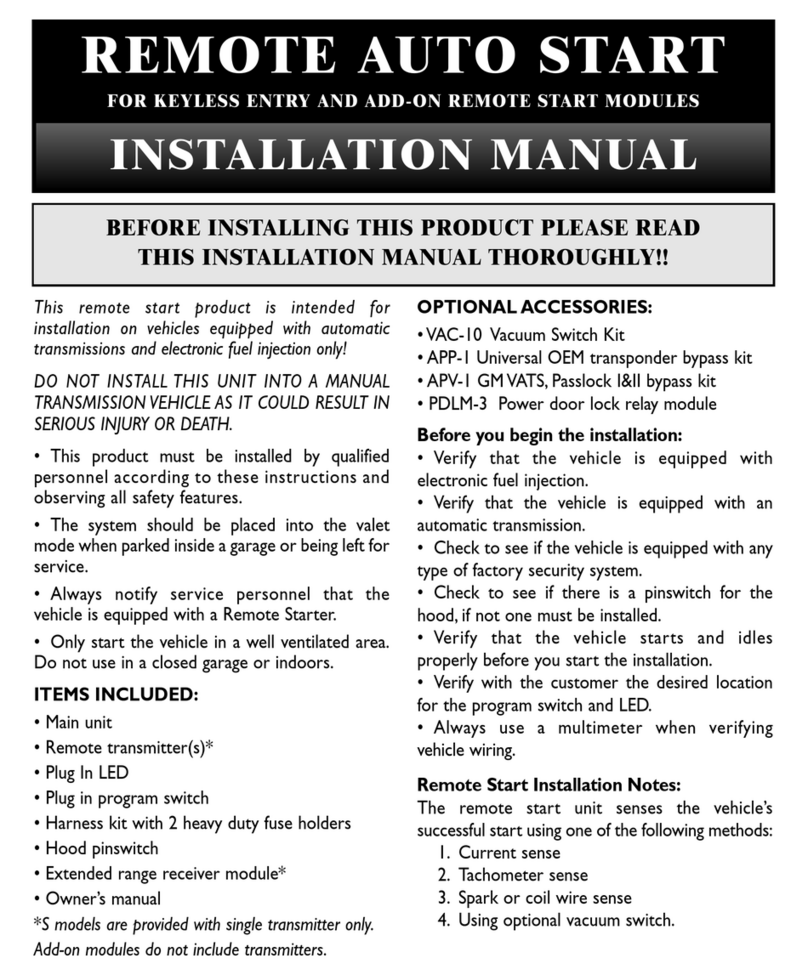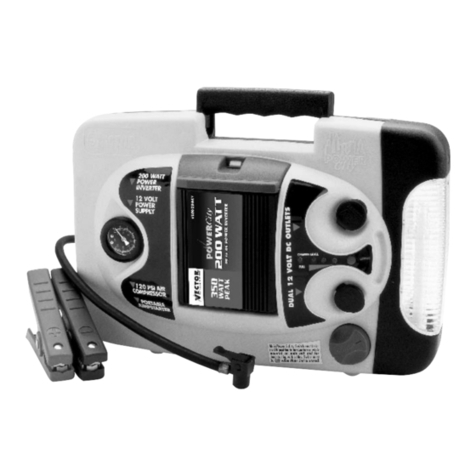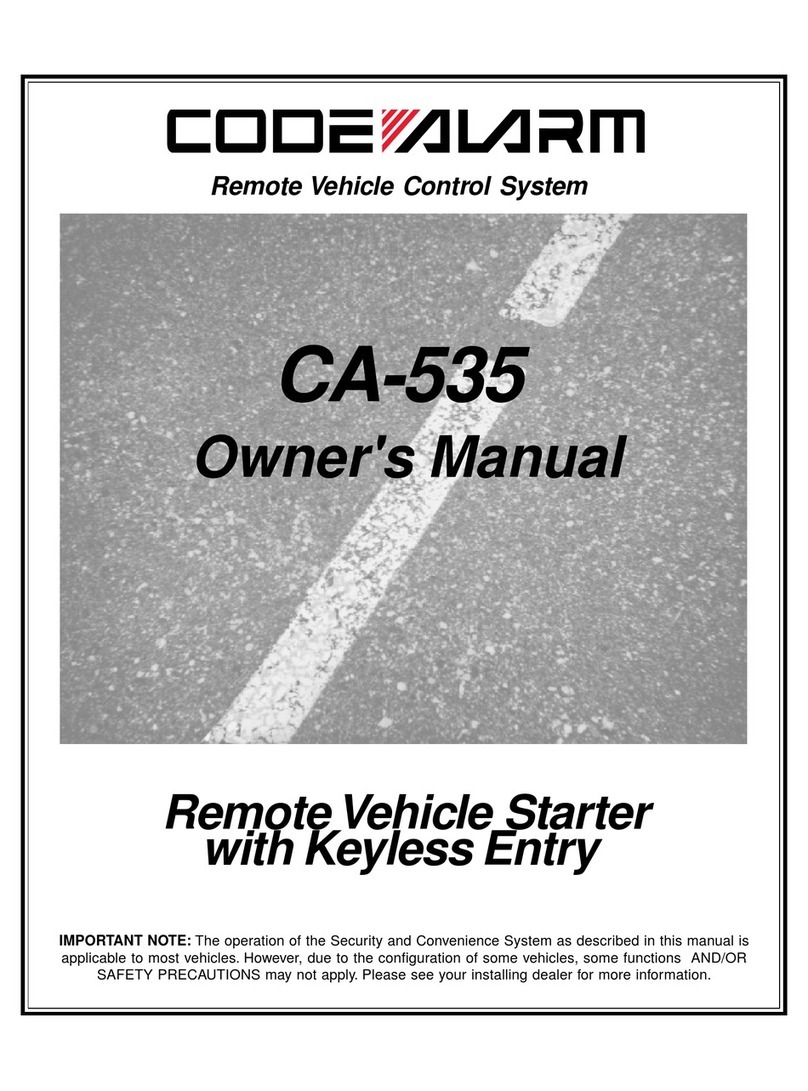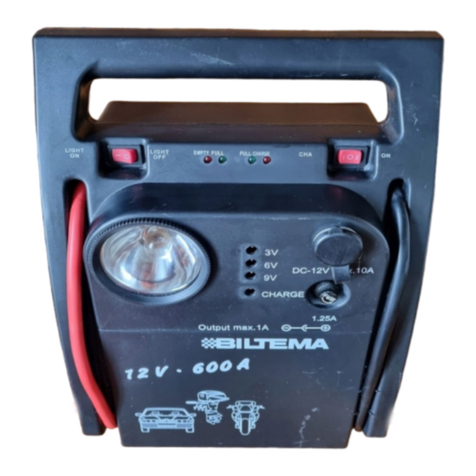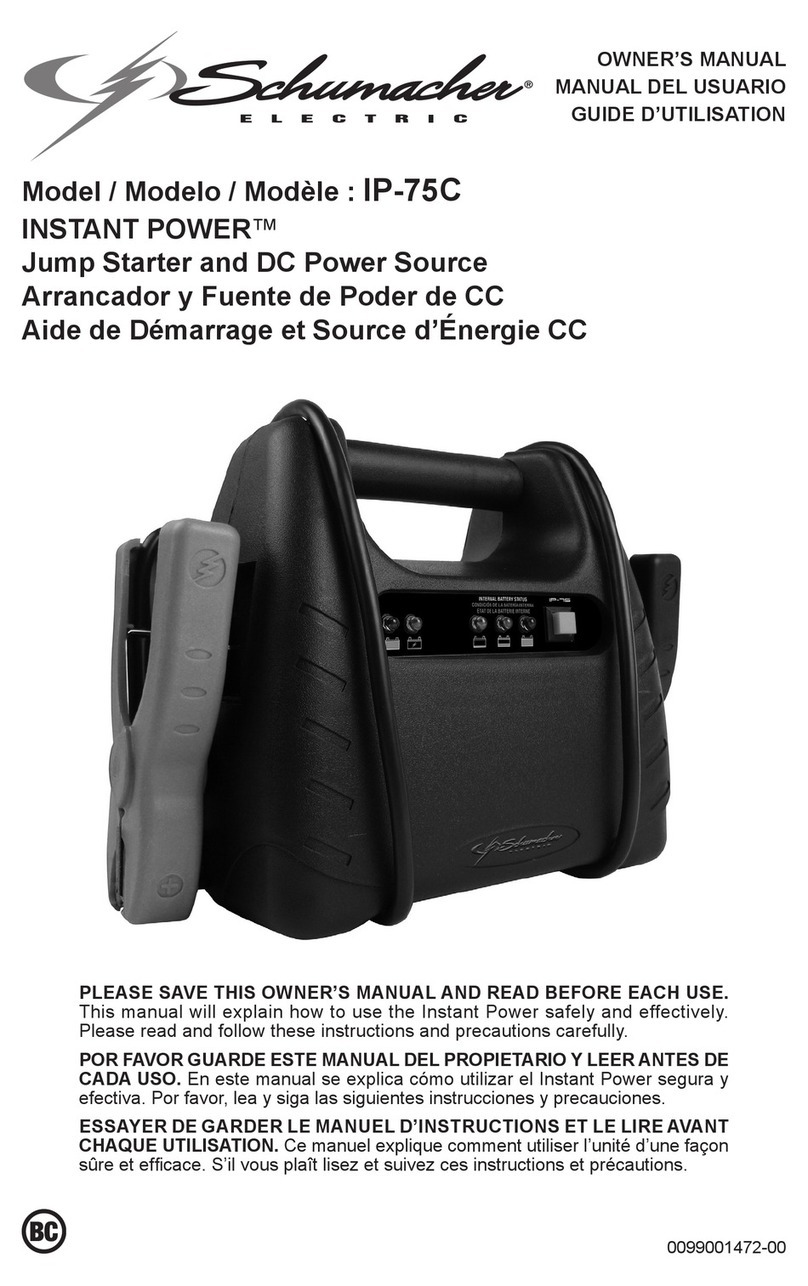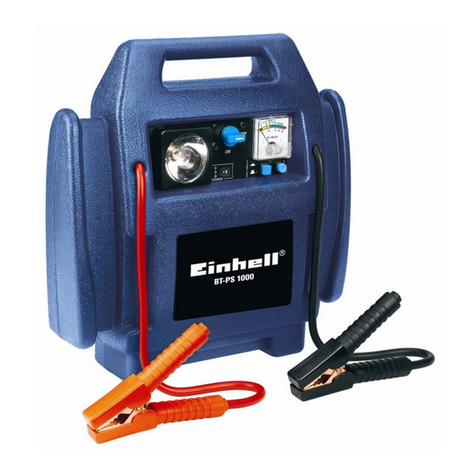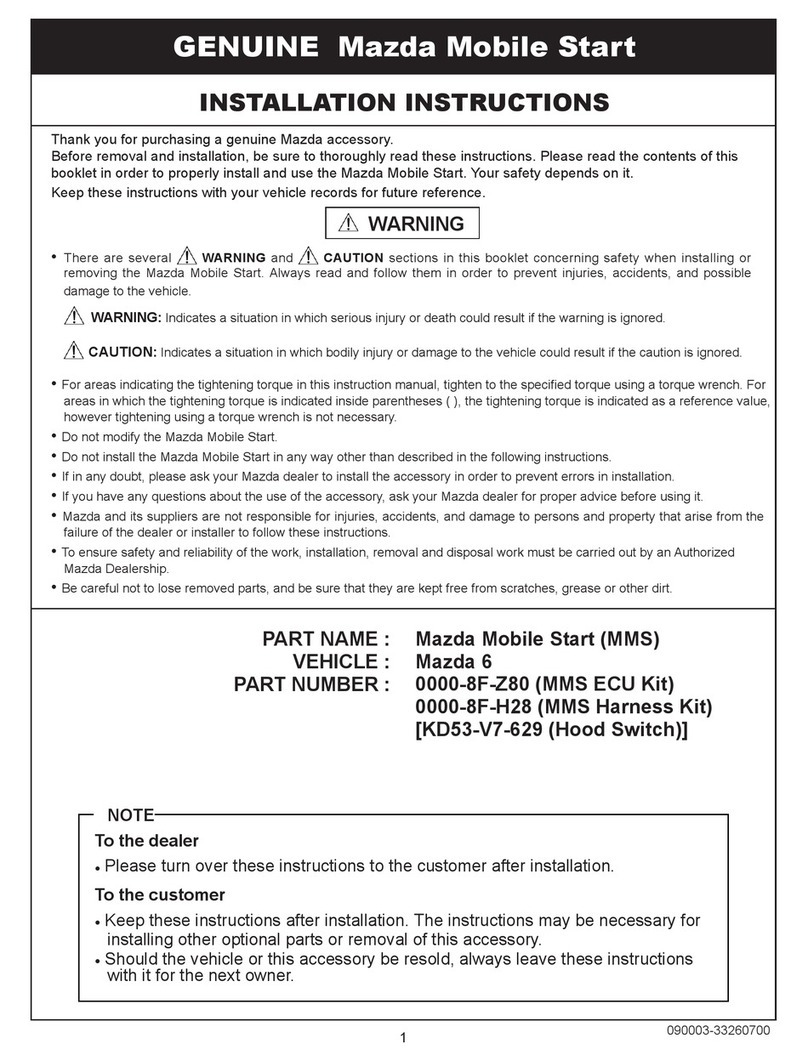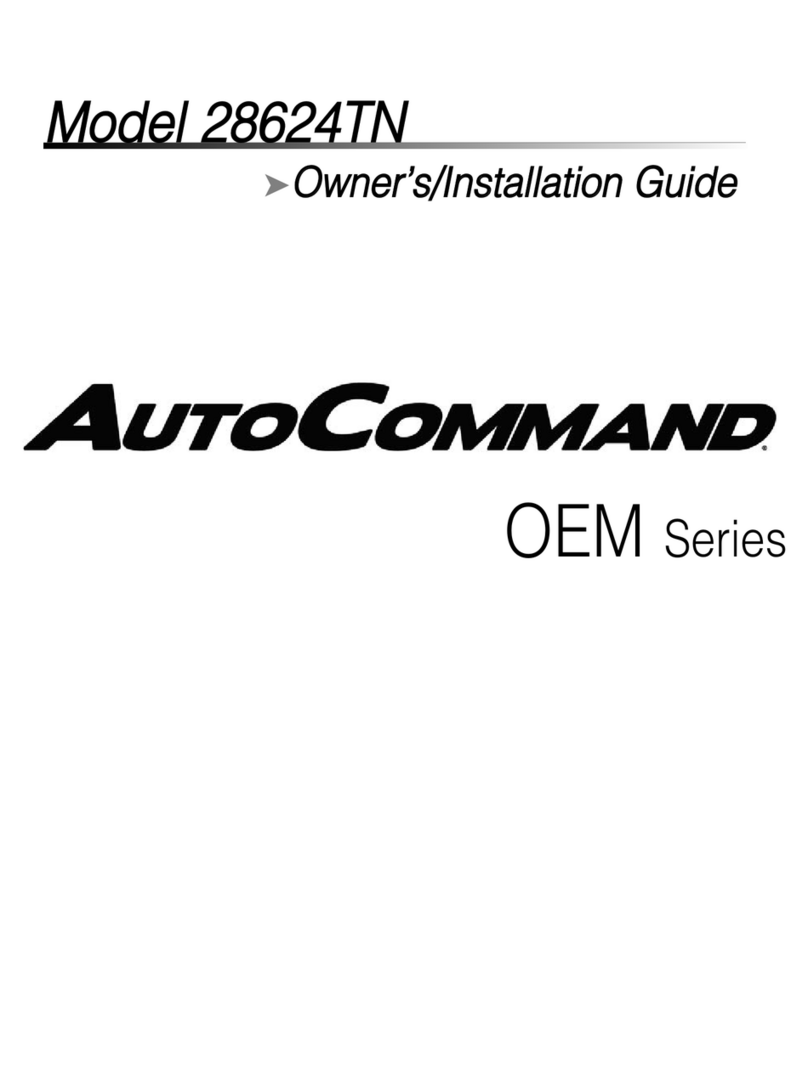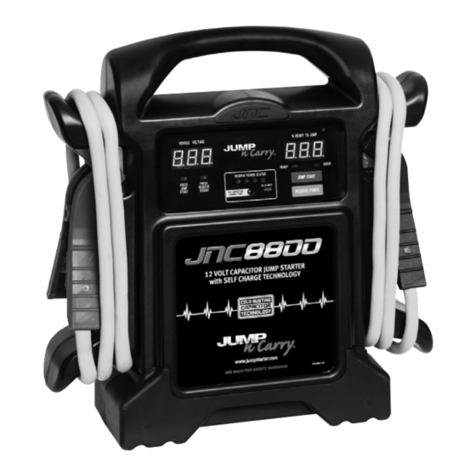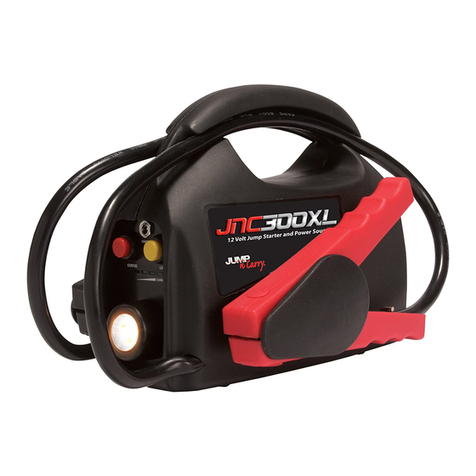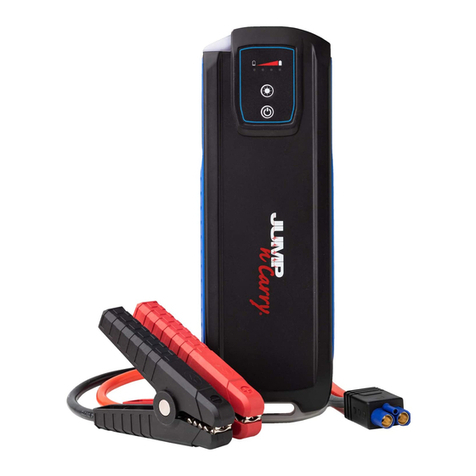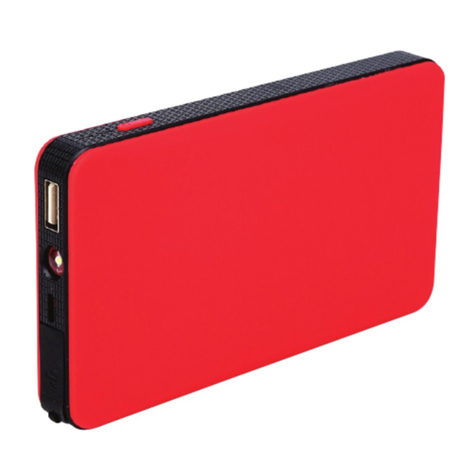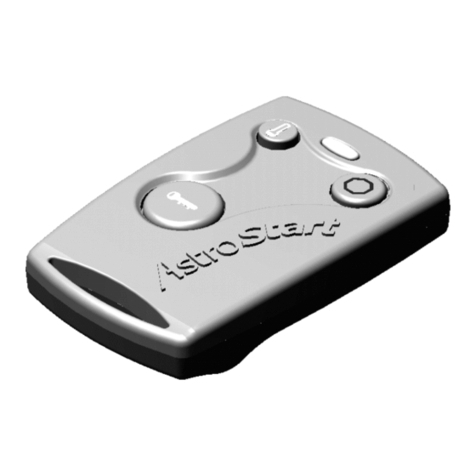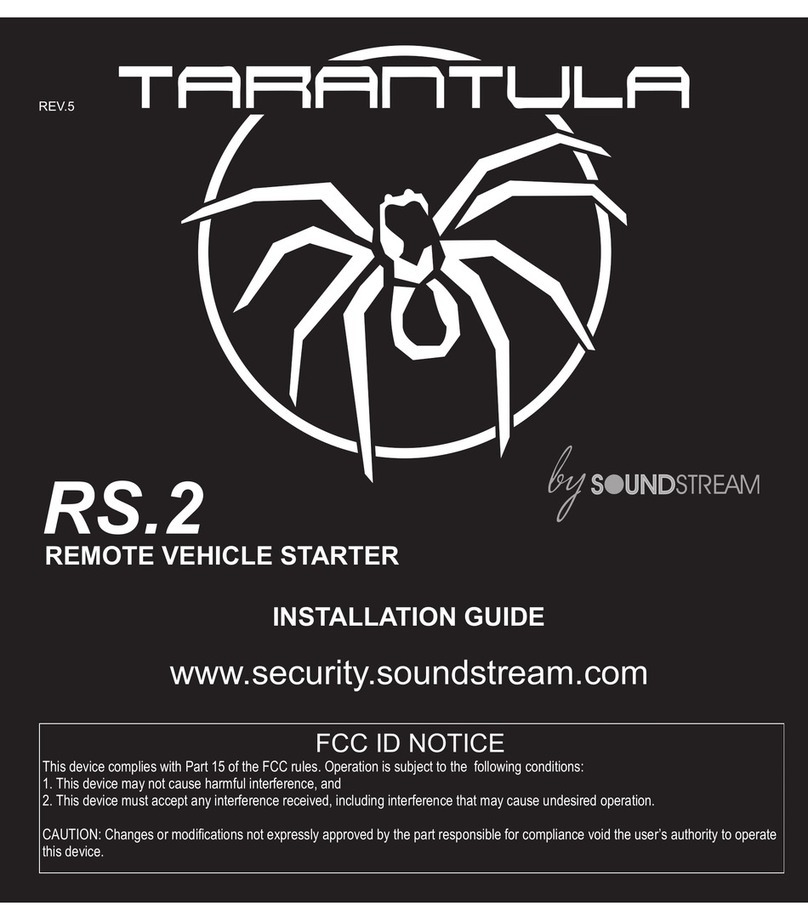
7
4. Connect output cables/clamps to the jump starter through the covered jump
starting port. Be sure that the cable connection is fully engaged and secure.
Once the smart cable/clamp is connected to the unit, the status LED on the
smart cable/clamp will light red.
5. Turn ignition off before making any vehicle connections.
6. Clamp the positive (red +) clamp to the positive terminal on the vehicle
battery (for negative ground system), or an alternate vehicle starting point as
recommended by vehicle manufacturer.
7. Clamp the negative (black, –) clamp to the a vehicle ground (unpainted portion
of the chassis or non-moving metal engine part). Never connect to the fuel line,
fuel injector or carburetor as the engine ground.
Note: Many vehicles feature alternate starting points, away from the battery.
Always use the alternate starting points whenever available.
Note: Make sure the cables are not in the path of moving engine parts
(belts, fans, etc.).
8. Upon making a vehicle connection, the smart cable/clamp LED will continue to
light red for 3 seconds as it senses the parameters of the new connection and
then should light green, indicating a proper battery connection has been made.
8a. If the Status LED on the smart cable/clamp flashes red after the vehicle
connection has been made, this indicates a reverse connection. Disconnect
from vehicle immediately and correct the issue.
8b. If the Status LED on the smart cable/clamp continues to light solid red after the
vehicle connection has been made, this indicates that the vehicle’s battery is
too low to allow the unit to activate (<1.3V) or a potential shorted connection.
Disconnect from vehicle and determine the cause of the issue before
proceeding.
9. Model JNC318 only. This model features preheat capability to overcome the
challenges of cold temperatures. When jump starting in temperatures below 0˚C
(32˚F), we recommend activating this feature by turning its switch (located next
to the jump starting port) on and waiting for the green preheat LED indicator to
light.
10. Start the vehicle (turn on the vehicle ignition).
Note: If the vehicle doesn’t start within 6 seconds, let the unit cool for 3
minutes before attempting to start the vehicle again or you may damage the
unit.
Note: During very cold conditions, the unit may not start on the first attempt.
We suggest attempting to start a second or third time, as the starting attempt
will warm the internal battery and improve your starting chances.
Note: Do not attempt to jump start after four attempts – either the unit does not
have sufficient power to start the vehicle or there is a more extensive problem
with the vehicle than simply a depleted battery.
11. When the vehicle is started, disconnect the negative (–) battery clamp from the
vehicle frame.Then, disconnect the positive (+) clamp.
12. Disconnect smart cables/clamps and properly store them for the next use.
